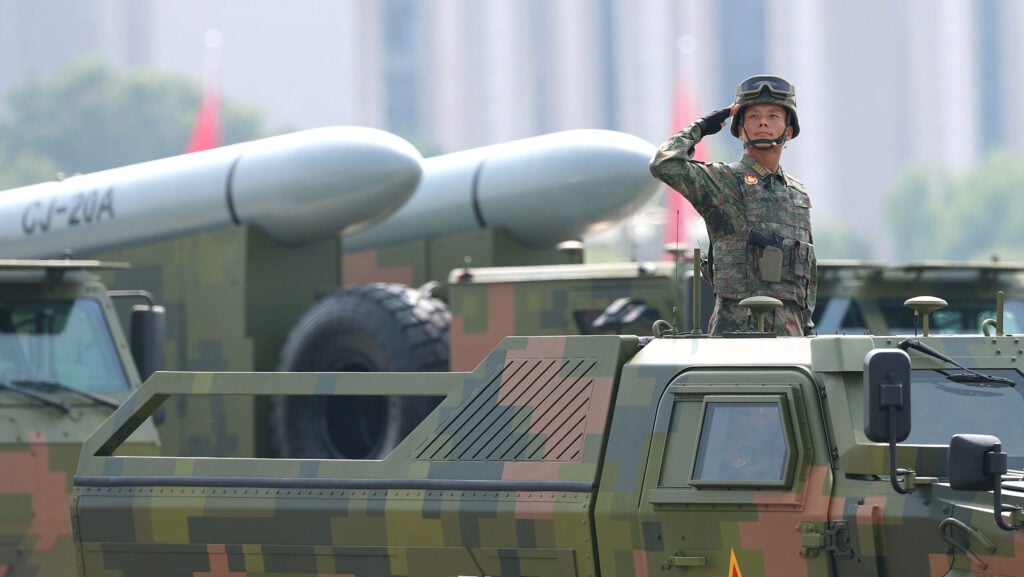China Unveils New Nuclear Capabilities in Military Parade
China showcased a new generation of nuclear-capable intercontinental ballistic missiles, advanced drones, and space defense systems during its largest-ever military parade, signaling a major leap in its strategic military capabilities.

China staged its most formidable military parade to date on the 80th anniversary of Japan's defeat in World War II, unveiling a host of advanced weaponry that included new nuclear-capable intercontinental ballistic missiles (ICBMs), hypersonic missiles, underwater drones, and sophisticated space and cyber defense systems. The parade, held in Beijing, was not just a display of military might but a calculated geopolitical message, with President Xi Jinping presiding alongside Russian President Vladimir Putin and North Korean leader Kim Jong Un.
Unprecedented Nuclear Arsenal and Strategic Missiles
Among the most notable revelations were three new types of nuclear-capable ICBMs: the Dong Feng-61, Dong Feng-31BJ, and the Dong Feng-5C. The DF-5C, in particular, drew significant attention due to its reported range exceeding 20,000 kilometers, effectively placing the entire globe within China's nuclear reach. State media and defense analysts highlighted the missile's ability to carry up to 12 warheads, a marked improvement in both precision and penetration capabilities compared to previous generations. The parade also featured the JL-1 and JL-3 nuclear-capable long-range missiles, expanding China's nuclear triad with air- and sea-launched options.
Emerging Technologies: Drones, Lasers, and Space Defense
China's push for technological dominance was evident in its unveiling of the AJX002 extra-large unmanned undersea vehicle (XLUUV), a 65-foot-long submarine drone capable of conducting stealth surveillance and reconnaissance missions. The military also introduced AI-powered drones, including the GJ-11 stealth attack drone, designed to operate alongside manned fighter jets, as well as "robotic wolves"—four-legged robots intended for mine-sweeping and reconnaissance. The parade marked the first public appearance of the HQ-29 space defense system, designed to target foreign satellites, and the LY-1 laser weapon, capable of disabling electronics and blinding pilots, signaling advancements in both offensive and defensive military technologies.
Geopolitical Theater and Global Implications
The event was thick with symbolism and international posturing. Western leaders largely shunned the parade, but the presence of Putin and Kim Jong Un underscored China's efforts to build a bloc of nations challenging the US-led global order. President Xi's speech, warning the world to choose between "peace and war," was a thinly veiled message to both domestic and international audiences. The display of military prowess, coupled with Xi's emphasis on dialogue over confrontation, reflects China's dual approach of deterrence and diplomatic engagement.
Propaganda, Perception, and Strategic Ambiguity
While Chinese state media touted the technological leaps and global reach of its new arsenal, independent analysts cautioned that much about these new systems remains shrouded in secrecy. The true operational readiness and reliability of the DF-5C and other new platforms are difficult to assess independently. The parade, replete with choreographed salutes, aerial displays, and the release of peace doves, served as much as a domestic morale booster as a signal to potential adversaries. The presence of advanced cyber and electronic warfare units in the parade further highlighted China's focus on information and hybrid warfare, areas where verification of actual capabilities remains challenging.
The parade's timing and scale, alongside the debut of weapons designed to counter both regional and global threats, underscore Beijing's determination to assert itself as a peer competitor to the United States and reshape the international security landscape.